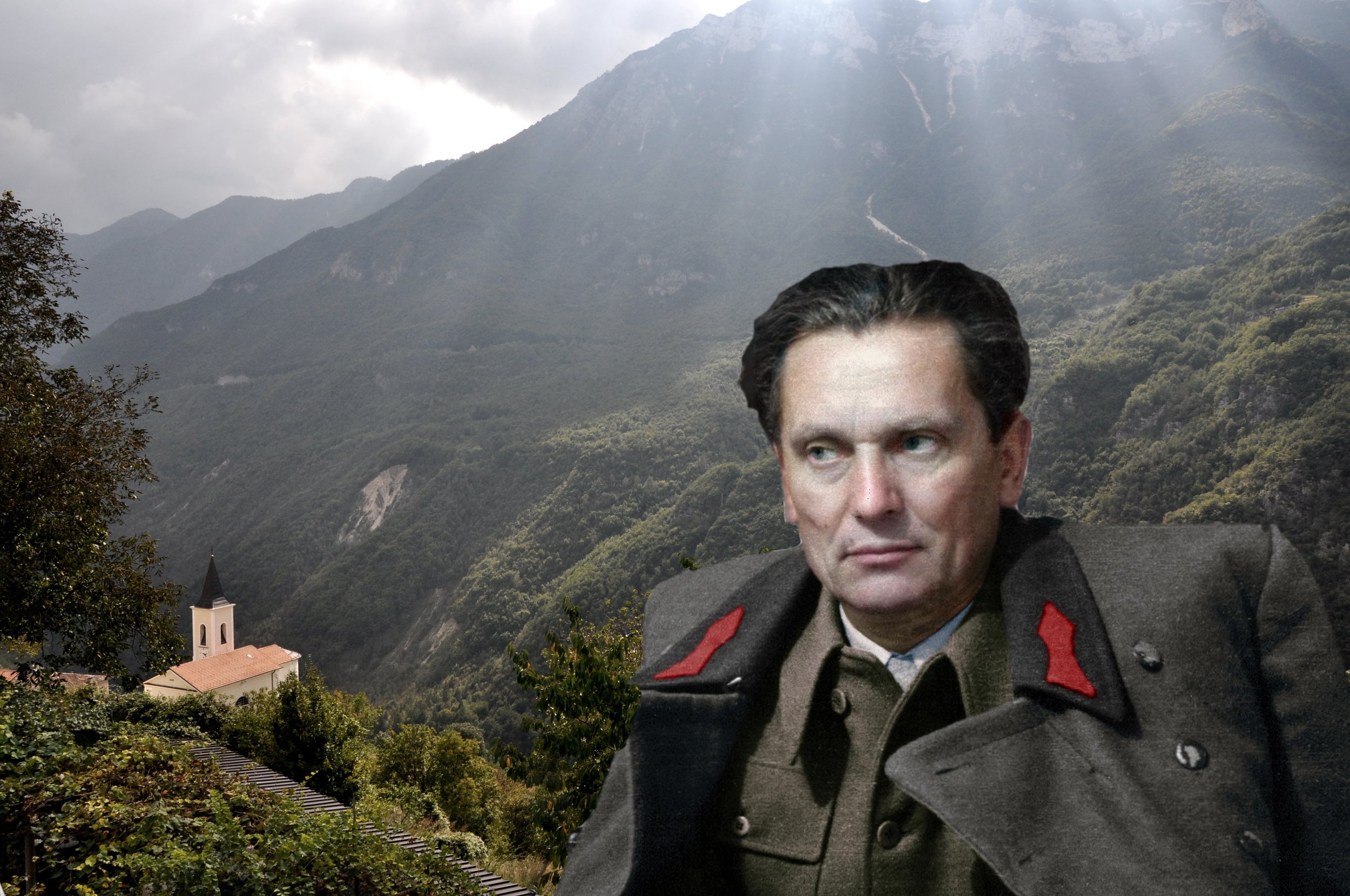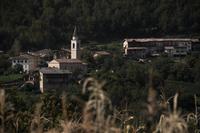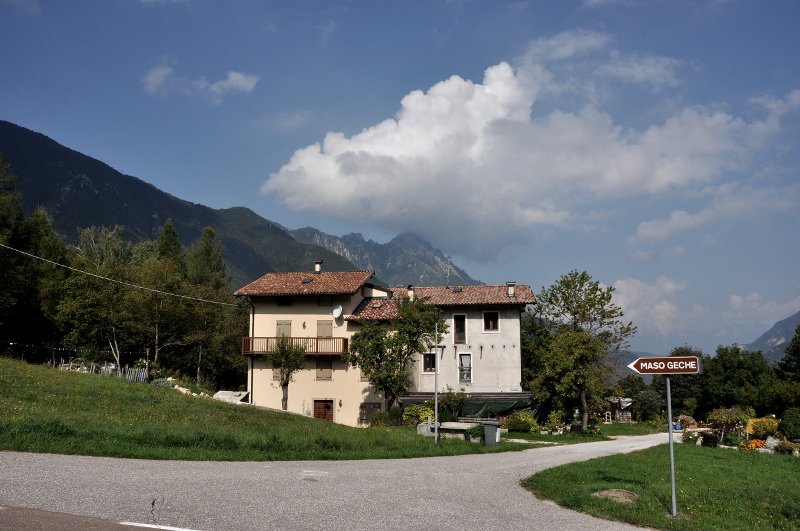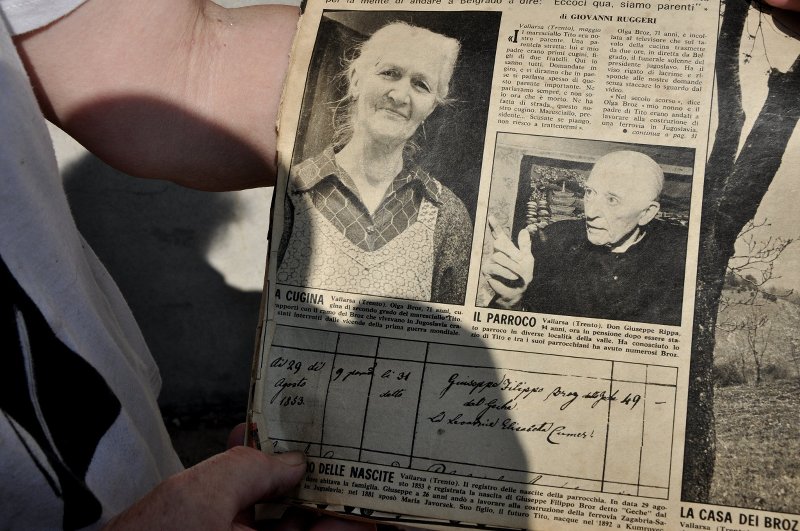
Trentino and Yugoslavia narrated through a legend: roots of Marshal Josip Broz Tito in Vallarsa
In Trentino there is a valley where the surname Broz is widely diffused. During the second half of the 20th century, a peculiar legend took shape among these mountains. We are in Vallarsa, a few kilometers from the town of Rovereto, where – according to many locals – the origins of Josip Broz, that history will remember as Tito, are to be found. The Yugoslav Marshal was one of the most peculiar and controversial figures of the 20th century: Partisan leader, head of the communist state that split with the Soviet Union, a prominent figure on the international political scene and, above all, leader and symbol of a country that disintegrated violently shortly after his death. The relationship between Marshal Tito and the Vallarsa Valley is being talked about for some time, and not only in Trentino, so that the page dedicated to Tito on the Italian Wikipedia refers to him as “the seventh of fifteen children of Franjo, a Croat who probably originated from Vallarsa”.
A legend from Obra
The story originates in the area around the village of Obra, in the Vallarsa Valley, where there is a small settlement called Brozzi. It is said that the Broz surname has been present in the area for centuries. Transmitted orally, the legend spread and evolved over time, assuming different shapes and contours. There is however a version which is more or less codified. It is narrated that a family of the future Yugoslav president lived in a place called Maso Geche, a bit isolated from Obra and nearby settlements. Valentino Broz, “Tito’s grandfather”, took over an old house, transforming it in a family cottage. Valentino had four children. One of them died at a tender age, while Ferdinando, Giuseppe and Vigilio started contributing to the household by working in the fields and as lumberjacks, integrating these activities, as much as possible, with other occasional jobs. Just like for all the other families in that area, emigration was always an option.
Parochial registers confirm the structure of Valentino Broz’s family. What we learn from memories passed down through the generations is that Giuseppe (according to archives, Giuseppe Filippo Broz, born on August 29, 1853) and Ferdinando (Luigi Ferdinando Broz, born on April 13, 1848) – or, according to other versions of the story, Vigilio (Vigilio Andrea Broz, born on November 27, 1843) – emigrated from Vallarsa to Croatia between the 1870s and the 1880s, most probably in 1878 or 1879. At that time, both territories were part of Austria-Hungary, and in those years many people from Trentino emigrated in the eastern parts of the monarchy. The story of foundation of the village of Štivor, in Bosnia Herzegovina, is probably the best known. According to legend, the Broz brothers were driven to emigrate by the possibility of being engaged in the construction of railway Vienna-Zagreb-Belgrade. Indeed, in those years a new railway line, connecting Bosanski Brod to Sarajevo, was under construction. The first portion was completed in February 1879, and the last one in October 1882.
Some time later, Ferdinando (or Vigilio) returned to Vallarsa, while Giuseppe married a Slovenian girl, and in 1892 they gave birth to Josip Broz, who became known to the whole world as Tito. The news about Giuseppes’s fate reached the valley, mainly thanks to the information his brother brought home.
Tito between history and conspiracy
The legend from Vallarsa is not an isolated case. Since the end of the Second World War in Yugoslavia, but not only, speculations began circulating that Tito might have (had) Russian, Polish, Austrian or Jewish roots. His life, marked from a young age by participation in illegal activities of the Communist Party, sudden movings and use of false names, offered an ideal breeding ground for speculations and conspiracy theories. The doubts about Tito’s true identity, particularly diffused during the 1990s, recently have been reactualized due to publication of declassified CIA document that puts in doubt Tito’s knowledge of the Serbo-Croatian language.
Apart from dozens of newspaper articles and many publicistic texts, the question of Tito’s origins has never been the subject of proper historiographic research. None of the scholars who seriously occupy themselves with history of Yugoslavia has ever shown any particular interest in this issue. Even the most recent Tito’s biographies, written by world-renowned historians such as Geoffrey Swain and Jože Pirjevec, don’t contain any reference to different theories about his origins, only a traditional version whereby Tito was the son of Franjo Broz, a Croat from Kumrovec in Zagorje, and Marija Javeršek, originally from village of Podreda, in Slovenia. The only partial exception is represented by considerations made by Vladimir Dedijer in his monumental biography of Tito, published in 1981. A former member of the League of Communists of Yugoslavia, sacked at the time of the Affaire Djilas, becoming a professional historian, in his book Dedijer attempts to refute speculations about Tito’s origins, reinvigorated after his death in May 1980.
The birth and life of a legend
In attempting to clarify the question, Vladimir Dedijer also makes reference to the Trentine case which, few months earlier, has been reactualized in Italy in an article appeared in the weekly Gente. The article has been published few days after Tito’s death, relying on a story transmitted orally over the years, according to some since the end of the Second World War, when the name of Josip Broz began to appear in the newspapers around the world. In addition to photos of the Vallarsa Valley and Maso Geche, the article contained statements of descendants of the family of Valentino Broz. Don Giuseppe Rippa, the then parson of Vallarsa, played an important role in defining the contours of the story, contributing to a process of consolidation of its credibility.
It is possible that Vladimir Dedijer has come to know about the Trentin legend thanks to attention given to it in the newspapers of the Italian minority in Yugoslavia. Shortly after the publication of the above mentioned article on the weekly Gente, the weekly newspaper Panorama from Rijeka started showing interest in the story, sending a crew to Vallarsa to find out more details. After talking to Don Rippa and some other local personalities, such as writer Sandra Frizzera, and studying parish registers, journalists from Rijeka have come to a conclusion that there was no evidence of a relationship between Trentin and Yugoslav Brozes. Vladimir Dedijer reacted by publishing Tito’s family tree, compiled by Andrija Lukinović, archivist from the Historical Archive of Zagreb [now called the Croatian State Archive], on the basis of preserved parish registers. Using available data, Lukinović reconstructed the paternal-line geneaology of the Broz family from the beginning of the 17th century, when parish registers were started in Kumrovec. As far as the previous period is concerned, Dedijer remains cautious, nevertheless quoting different sayings whereby the Broz family originated in Bosnia, Herzegovina, Spain, Istria, France or even Italy. In any case, we are talking about the possible settlement in Zagorje more than four centuries ago.
However, these information have not reached Trentino, where a word began to spread that in the whole Yugoslavia there have been no trace of the Broz surname. The descendents of the family of Valentino Broz continued releasing interviews, telling family stories and anecdotes. Also, it is narrated that representatives of Yugoslav government came to Obra, maybe even Tito himself. Many newspaper articles and reportage talked about physiognomic proximity, claiming that the Trentin Brozes bore a “remarkable resemblance” to Yugoslav leader.
In 1984 it was decided to create a commission, as part of “The Popular Committee of Obra di Vallarsa”, composed of historians, journalists and the then major, with the aim of clarifying the question through meticulous researches and investigations. However, no definite answer nor concrete evidence has been reached. Did Tito have Trentin origins or not? Over the years, the same information continued to circulate, but the story became gradually consolidated.
In the same period, the credibility of the story has been publicly recognized by some prominent personalities, such as politician Flaminio Piccoli, who has stated, on the occasion of a congress held in Rome in 1991, that Tito’s ancestors were from Trentino. Representative of the Italian Christian Democratic party (DC) in Trentino at the time, Piccoli asserted that he had “great respect” for Marshal Tito, because “his great grandfather was Trentin, originally from the region around Rovereto”. The story changes again – it was not Tito’s father, but rather his great grandfather who was from Trentino – but it is told by a prominent politician who met Tito personally.
What also contributed to building credibility of the story were numerous publications dedicated to emigration from Trentino, an issue that, since the 1980s, has attracted increasing interest. Already in 1984, Bonifacio Bolognani – Franciscan friar and scholar originally from Trentino who moved to the United States – mentioned a legend from Obra in his book about emigration from Trentino, published in English. The local writers and historians are those who paid greatest attention to the story: Daniella Stoffella refers to it in her book about emigration from Vallarsa, while Renzo Grosselli mentions it in a study about emigrants from Trentino which is widely read. Remo Bussolon and Aldina Martini revived it in the most important work about the history of Vallarsa. The theory of Tito’s Trentin origins is also being mentioned in different academic essays published in other countries (Frédéric Spagnoli, 2009). We are talking about more or less precise publications, some of which treat the argument with caution, but that, often citing each other, contribute to strengthening the authoritativness of the legend.
In the meantime, a local section of RAI [Italian public radio and television broadcaster] started to show an interest in the story, relaunching it periodically through tv reports. In 2008, a special program was dedicated to the legend of Obra, and on that occasion journalists from Trentino went to Croatia for the first time to hear the other side of the story. They went to Kumrovec, where they visited the birth house of Yugoslav leader and studied parish registers, trying to learn more about the history of Tito’s family and about his “Croatian father” Franjo Broz. But the question remained: Is it possible that Marija’s marriage with Franjo was her second wedding? Or rather, did she married Franjo after she gave birth to Tito and after Giuseppe Broz died?
In the summer of 2015, a visit of Tito’s granddaughter Svetlana Broz to Vallarsa, invited to a culture festival to present her book about the Yugoslav wars, becomes the occasion to discuss the issue. Asked during an interview to comment on the theory about Tito’s Trentin roots, Svetlana Broz responded vaguely and compliantly, saying: “That theory is just a theory. I have documentation that proves that my grandfather was born in the Croatian village of Kumrovec, as stated in his official biography. However, I can neither confirm nor deny anything about his ancestors”. In such ambivalent spaces, the legend from Vallarsa continues to live. Narrated and repeated mostly in Trentino, from time to time it arouses the interest of a wider public.
A story about Trentino and Yugoslavia
Of all the legends about the origins of the Yugoslav president, the Trentin one is probably most closely related to the history and identity of a local community, unlike the others, often inspired by different conspiracy ideas. It evocates the history of the territory profoundly marked by the migration phenomenon and is paradigmatic of a broader history of emigration from Trentino at the end of the 19th century and of pervasiveness of collective memories in those valleys. Its diffusion beyond the borders of Vallarsa, began in the 1980s, followed a gradual opening-up of Trentino to the international processes and reinforcement of consciousness about its “place in the world”. Above all, it is an integral part of the process of ri-elaboration of the traumatic experience of migration which profoundly marked local community: discovery of illustrious ancestors can help in making a sense of loss.
At the same time, this legend makes us think about the image socialist Yugoslavia projected abroad, about its perception in Italy and among inhabitants of one of the most remote valleys of Trentino. Considered a hostile country in the post-war period, over the following decades Yugoslavia was increasingly perceived by the Italian public as a close neighbor, so that relationships with the political leadership of socialist country were considered a question of public interest. It is narrated that inhabitants of the Vallarsa Valley had been deeply moved by Tito’s death in May 1980 and that a local parson “had recited the prayer for Josip Broz”. A few years later, when asked for his opinion about Marshal Tito, an inhabitant of the valley pointed out a change of perception: “There is no way to reconcile obscure and bloody events from his early years, ambition, will to power, sectarianism and violence of the first Tito with wise and prudent politician, magnanimous towards his enemies, which was the second Tito”.
The Trentin roots of Yugoslav Marshal remain a legend. In all those years, no proof has emerged that confirms that Giuseppe Broz, who probably emigrated to Croatia and Bosnia in search of work, was Tito’s real father. On the other hand, the official version of Tito’s biography remains undisputed. But like all legends, regardless of their adherence to reality, the one about “Trentin” Tito immerse us in perceptions, imaginings and memories deposited at the intersection of personal life stories, local vicissitudes and the Great History.



















 To Top
To Top